If you’ve ever looked in the mirror and wished you had a nicer smile, you know exactly how disheartening it can be. A bright white smile can be tough to attain, and even harder to preserve.
But a dazzling smile can be so important for both your professional and personal lives that it’s always worth it.
Whiter teeth can open doors for you by changing your appearance to make you look more attractive and professional, as well as making you feel more confident in your smile.
Remember, when you feel good, you usually look good too! Confidence really can’t be overrated as a positive trait, and it can all start with your pearly whites.

According to polls, 61% of people who whitened their teeth said it made them feel more confident. That’s a pretty significant figure! Teeth whitening is a great option for anyone who isn’t happy with how they look or feel, and doesn’t have to break the bank or take up lots of time.
There are a ton of different options out there for whitening your teeth, each with their own advantages and disadvantages. It’s not just about how it makes you feel, either. Whitening your teeth can change the way people think about you, and give you a leg up in your career or personal life.
58% of people who had their teeth whitened reported that they were more likely to get a job or a promotion that they were applying for, and 65% said they were viewed as more professional. 59% also said that they were seen as more outgoing.
So much of confidence and charisma is based on being happy and comfortable with who you are and how you look, and whitening your teeth is a really terrific first step towards making you feel like the person you’ve always wanted to be.
It’s worth keeping in mind that teeth whitening should never be considered a replacement for regular dental hygiene. If you’re not brushing and flossing regularly, then none of the options mentioned in this article are going to do anything for you. It’ll really just be a complete waste of money.
The American Dental Association recommends brushing your teeth twice a day, every single day, as well as flossing once per day to clean out the hard-to-reach spaces in between your teeth.
They also recommend seeing your dentist about once every six months for a regular cleaning and so they can make sure nothing’s going wrong with your smile. You should also think of your dentist as a resource when you’re trying to pick the right whitening products!
Nobody knows more about your teeth than your dentist, and they’ll have all the relevant information that you need to make the right decision and find the perfect whitening solution for you.
There’s no such thing as a stupid or unimportant question when it comes to your teeth, so don’t be afraid to speak up with any thoughts you might have!

One of the concerns that a lot of people have about teeth whitening has to do with the enamel on their teeth. Even though whitening systems are considered to be perfectly safe, you still have to make sure that you’re following the directions on the box to avoid causing any damage to your enamel, and there’s always the chance that something might happen.
This is definitely a valid concern! That’s why we’re here to help. In this article, we’ll talk about your enamel, some of the things that can damage it, and how different whitening systems can affect your teeth differently.
There’s a ton of information out there about teeth whitening, and it can seem like an impossible task to sort through it all! But being informed and knowledgeable about your teeth is a great foundation for making all the right decisions, so it’s worth investigating.
Here’s some relevant information that you might find helpful when you’re deciding to check out how to get whiter teeth today and start your teeth whitening journey.

What Is Enamel?
Every tooth in your mouth is made up of a few different layers. The innermost layer is called the pulp of your tooth, and it’s where all the blood vessels and nerves live. This is the most important part of your tooth! If anything happens to the pulp, your tooth can wither and die.
Pulp is very soft and vulnerable, so any damage to it is going to cause quite a bit of pain. That’s why it’s so important to avoid tooth decay, and treat it as early as possible when it does happen! The layer outside the pulp is called dentin.
Dentin makes up the majority of most of your teeth and is a little harder than the pulp. It’s full of a ton of little tiny tubes that lead from your pulp to the surface of your tooth. Unlike the pulp, which is full of important stuff like nerves and blood vessels, dentin is mostly there to provide some structure to your tooth.
However, dentin is also vulnerable to damage, and it can be pretty painful if decay starts to reach it. Since both the dentin and the pulp are soft and vulnerable, it’s important to keep them safe from any damage or decay.
That’s where your enamel comes in! The enamel is the outermost layer of each tooth, and it’s much, much thinner than the other two parts.
However, it’s extremely tough and hardy and is responsible for protecting the soft inner layers.
Enamel is actually the hardest substance in your entire body, even tougher than your bones. It’s meant to hold up to decades of chewing, brushing, and grinding without cracking or breaking, and it does a pretty great job.
Enamel is also partially responsible for the color of your teeth. While dentin is usually yellow, enamel can range from bright white to yellow to a translucent gray. This can vary pretty widely from person to person and is also affected by the state of your enamel.
While enamel is pretty tough and hard to break, that doesn’t mean it’s completely invincible! It can still be damaged by grinding your teeth, cracked, or eaten away by acids or sugars in the food you eat. It can also be harmed by bacteria that grow in your mouth when you don’t brush regularly enough.
Unlike most parts of your body, your enamel actually doesn’t contain any living cells. This is part of what makes it so strong, but it also means that it can’t regenerate or heal like the rest of your body.
Once your enamel is damaged or worn away, it’s gone for good! That’s why you need to take good care of it and make sure it isn’t damaged.
How Can Enamel Be Damaged?
There are lots of different ways that enamel can be damaged or stripped off your tooth. It may be the strongest substance in your body, but it’s not exactly stainless steel, so you still need to be careful about what you do to your teeth.
Grinding your teeth, for example, can wear away at the enamel and leave you vulnerable to tooth decay or damage. This is called bruxism, and it affects millions of adults in the US alone.
Your teeth are meant to handle a certain amount of grinding and rubbing without a problem, but too much can grind your enamel away altogether. Some people grind their teeth in their sleep, and might not even know they’re causing damage until it’s too late.
That’s why it’s a good idea to see your dentist regularly, so they can check for any early signs before they become real problems. Bruxism can be caused by stress, anxiety, misaligned teeth, some medications, and sleep apnea.
There are a few symptoms that you can look out for, since you might not even know that you’re grinding your teeth. These include headaches, pain in your face or jaw, tightness, or soreness in the muscles of your jaw.
If you notice any of these symptoms, let your dentist know so they can check your teeth for signs of grinding.

How Plaque Damages Your Enamel
Plaque buildup is the most common cause of damage to your enamel, but luckily it’s also one of the easiest to fix.
You’ve probably heard a spiel about plaque from every dentist you’ve ever had, dating back to your childhood, but it’s still worth going over it again. Plaque is a thin biofilm that develops on your teeth after you eat, made from saliva, leftover food particles, and bacteria. It’s extremely sticky, and can completely cover the surface of your tooth.
Because it’s slightly yellow in color, plaque is one reason why your teeth can start to look less white, although there are more factors in play. The good news about plaque is that it’s very easy to get rid of! All you have to do is brush your teeth regularly, and you can remove any plaque on your teeth.
Flossing also helps by getting rid of any plaque that gets stuck in between your teeth. However, if you don’t brush your teeth as often as you should, then you can cause a big problem for your enamel.
Plaque is partially made up of bacteria, which can cause serious issues for your enamel. Every part of your body, including your mouth, is constantly full of bacteria. This might sound gross, but it’s actually not a bad thing!
Some types of bacteria can be helpful for your body, like the ones in your gut. These bacteria improve your immune system and help keep your insides clean. The bacteria in plaque, however, are another story.
They can actually eat away at your enamel, weakening it and sometimes even stripping it away from your tooth completely. This is a major problem for your tooth since it exposes your dentin to potential damage.
The bacteria also doesn’t stop there and will continue to eat its way through your dentin all the way down to your pulp. If you let it reach this point, you may end up needing a root canal to clean all the decay out of your tooth, and no one wants that.
Even if you can keep these harmful bacteria from reaching the inner parts of your tooth, you still might need a crown or a filling to replace the enamel that’s been eaten away already.
Make sure to brush your teeth twice a day, especially after you eat. Enamel may be tough, but it doesn’t last forever, and once it’s gone, it’s gone for good.
If you leave plaque on your teeth for too long, another issue can come up. Minerals from your saliva can mix with the plaque to create tartar, which is a hard, yellow-brown buildup that sticks firmly to the enamel of your teeth.
This can happen as quickly as 48 hours after the plaque appears, so skipping even a day or two of brushing can lead to tartar building up in your mouth. Unlike plaque, tartar is attached to your tooth pretty firmly, and usually can’t be removed by brushing alone.
Only a dentist can clean the tartar off your teeth, which means you’ll have to wait for your next regular cleaning. Just imagine all the damage that can be done to your enamel during that time! The bacteria will keep eating away at your enamel for the whole time the tartar is on your teeth, which can cause some pretty serious damage.
Tartar is pretty common, with almost 70% of American adults having it in their mouth at any one time, but that doesn’t mean you can be lax about it. It’s in your best interest to avoid tartar buildup as much as possible, so your enamel can survive the rest of your life without being eaten away!
Tartar is also a real problem if you want your teeth to look whiter since it’s yellow in color and can’t be brushed away easily.

Whitening Your Teeth Without Damaging Enamel
Whitening your teeth can be great for your appearance and self-confidence, but it’s important to make sure that you’re doing it safely. After all, there’s no point in trying to make your teeth whiter if you’re just going to destroy your enamel doing it!
Most mainstream teeth whitening products use a hydrogen peroxide solution to bleach your teeth clean, which is considered to be pretty safe. It’s been studied countless times, and, for most people, using whitening products isn’t going to cause any real damage to enamel.
However, it’s still important to keep in mind that these are potentially harmful chemicals, so you should make sure to follow the directions on the box so avoid hurting your teeth.
Peroxide can also cause damage to your enamel if it’s already cracked or thinned too much, so you should stop using teeth whitening products if you notice any pain, especially on particular teeth.
It’s never a bad idea to talk to your dentist before starting a new teeth whitening system, just in case there’s anything about your teeth that would make that a bad idea.
Whitening Your Teeth With Baking Soda
Considering the strength of the chemicals in most teeth whitening products available on the shelf of your local drug store or supermarket, some people prefer to try gentler, more natural solutions. This is totally fine!
After all, even though teeth whitening products are considered to be pretty harmless, you should only use something on your teeth that you’re totally comfortable with. The only one who should be deciding what goes in your mouth is you, so feel free to try a bunch of different options before landing on the one that’s right for you.
Most natural remedies for teeth whitening are going to be fine for your enamel, but there are some that can cause some damage. Make sure you do your research on any given cure before you try it, to avoid accidentally grinding down or otherwise damaging your enamel.
Baking soda is one natural cure for whiter teeth that you may have heard before. It’s one of the most commonly cited holistic remedies for teeth, and it can actually be pretty effective.
Baking soda has mildly abrasive qualities, which means it can actually rub the stains right off your teeth, leaving them whiter and shinier than before. It’s also an alkaline, which is good for preventing bacteria from growing on your teeth.
When you brush your teeth with an alkaline like baking soda, it changes the pH balance in your mouth. A more acidic environment is better for bacteria, so a little baking soda can start to make a difference in how many bacteria are chewing on your enamel at any one time.
The effects of baking soda are going to be very gradual, and you’re not going to see any drastic results. However, it has been shown to slowly whiten your smile.
The most common way of cleaning your teeth with baking soda is to mix a little bit with some water to make a paste, then using that paste to brush your teeth.
It’s worth noting that brushing your teeth with baking soda isn’t meant to be done instead of your regular brushing! It’s meant to be an addition to your usual dental hygiene, not a replacement.
It’s also worth keeping in mind that there aren’t really any studies backing up the idea that brushing your teeth with baking soda is going to make them whiter.
The science that has been done has mostly been focused on studying toothpaste with baking soda in it, although those studies have been pretty positive.
Multiple scientific studies have shown that toothpaste with baking soda is more effective at cleaning stains off your teeth than toothpaste without it, and the higher the concentration of baking soda, the more clean your teeth are going to be. There are similar studies that show baking soda toothpaste is more effective at cleaning plaque than toothpaste without baking soda.
However, it’s very important to be careful with baking soda and only use it to brush your teeth once or twice a week. Any abrasive substance, even a mild one like baking soda, can damage your enamel if you brush with it too frequently.
You’re better off brushing your teeth twice daily with your regular toothpaste, or toothpaste with baking soda in it, and then brush with the baking soda and water concoction once or maybe twice a week. This is the best plan for whitening your teeth without rubbing away any of the enamel.
Some people recommend brushing your teeth with baking soda and a little lemon juice. The idea is that the addition of the lemon will make the baking soda even more effective at cleaning yellow stains off your teeth. However, science doesn’t really back this theory up.
Baking soda is plenty good at cleaning your teeth by itself, and there’s really no evidence that lemon juice adds anything to the procedure. In fact, lemon juice can actually eat away at your enamel itself. Lemon juice is highly acidic, which can be bad news for your enamel.
The theory is that the alkaline baking soda will neutralize the acid in lemon juice, but this may or may not actually be true. It’s a fact that alkalines can neutralize acids, but lemon juice is extremely acidic, and baking soda might not be enough to get the job done.
Besides, finding the exact mixture of alkaline and acid would be extremely difficult to do on your own, and there’s really no reason to try. You’re probably better off sticking to baking soda by itself or trying a different method of cleaning your teeth.
Whitening Your Teeth At The Dentist
If you’ve tried the natural remedies and they just don’t seem to work for you, then you may want to graduate to peroxide-based teeth whitening methods. The simplest way to whiten your teeth with peroxide is to just have your dentist do it.
This usually requires sitting in the chair for about 90 minutes at a time while the dentist applies the peroxide solution to your teeth and gives it a chance to work. If you’re worried about harming your enamel, having your teeth whitened professionally can go a long way towards putting your mind at ease.
After all, if you can’t trust your dentist to whiten your teeth without damaging them, then who can you trust? You should start to see results after just one session with your dentist, although you’ll have to go back a few more times before the treatment is complete. That speed is another benefit of getting your teeth whitened professionally.
However, there are a couple of downsides as well. The big one is going to be the cost. Whitening your teeth professionally can be pretty pricey, and it’s generally not covered by insurance.
At-home whitening products are usually a lot cheaper. There’s also the convenience factor to consider. Nobody likes spending more time at the dentist than they have to, especially if you think about all the time it takes to drive there, wait in the waiting room, get treated, make another appointment, and finally drive back home.
Even though it can take a little longer overall, using an at-home whitening product is going to take up much, much less of your day.

At-Home Whitening Strips
When it comes to whitening your teeth at home, the most common product that people start with is going to be the whitening strips. The strips are made of a very thin and highly flexible plastic that’s been coated with a peroxide solution.
All you have to do is apply the strip to your teeth, leave it for a few minutes while it works, and then pull it off and throw it away. This is a pretty easy and convenient way of whitening your teeth, which is part of why it’s so popular. It’s also very cheap, with each kit costing far less than going to the dentist to have your teeth whitened professionally.
Whitening strips probably aren’t going to cause any damage to your teeth as long as you follow the instructions carefully. Still, since you’re doing the procedure at home instead of with your dentist, it’s on you to pay attention to any pain you might feel that could be an indication of a crack in your enamel.
If your enamel is damaged, using the peroxide strips could make it worse. It’s also very important to pay attention to the ingredients when you’re buying whitening strips. Some strips use a solution containing chlorine dioxide along with the hydrogen peroxide.
Chlorine dioxide is the same chemical used to clean public pools, and it can strip the enamel right off your teeth if you’re not careful. If you want to try the whitening strips, be sure to stick with the ones that don’t contain chlorine, for the sake of your enamel.
Whitening Trays
Another option for skipping the dentist’s chair and whitening your teeth in your own home is going to be using whitening trays. These systems use plastic trays filled with peroxide gel that you apply to your teeth like a mouthguard.
They can sometimes be more powerful than whitening strips, which means faster results. They’re also a little more comfortable to use. The gel is also a lot better at getting into the little nooks and crannies between your teeth that the strips just can’t reach, which makes your smile look a lot more uniform.
However, the more powerful solution can also bring a higher risk of damage to your enamel. Many whitening trays require you to apply the gel to the trays yourself, so you need to be careful to always use the right amount.
Even though the peroxide gel is considered to be perfectly safe, using too much of it can cause some damage to your enamel. It’s also easy to accidentally irritate your gums with the peroxide, so be careful about avoiding that as well.
The other big downside of the whitening trays is convenience. They usually have to be left in your mouth for a pretty significant amount of time, which can get frustrating.
You can’t eat or drink while the trays are in, so finding some time to set aside for whitening is probably your best bet if you’re going to use the trays.

Wand-Based Whitening Products
If the inconvenience of the trays is turning you off, you can always try out wand-based solutions like Snow. Snow uses an applicator wand that’s a little like a paintbrush to apply the peroxide gel to your teeth, which allows you a little more precision than the trays or the strips.
The wand allows you to paint every little nook and cranny without overflowing and affecting your gums, which is nice. You then put in a special mouthguard that includes Snow’s innovative LED activating light, which helps the gel whiten your teeth faster and more effectively.
If you’re worried about possible damage to your enamel, Snow also offers a special desensitizing serum that can be applied to your teeth before the peroxide gel.
The desensitizing serum helps prevent any pain if you have sensitive teeth, while also strengthening your enamel. Snow also offers access to their unique app that gives you total control over your whitening experience. If you want to see faster results, use the app to add more whitening time.
If you’d rather take it slow and avoid the possibility of damaging your enamel, the app affords you that option as well. If you’re looking for an all-around whitening product that gives you control over the entire experience,
Snow might just be the right choice for you.

Whichever method you end up using to whiten your teeth, the key to avoiding any damage to your enamel is going to be paying careful attention to the directions. There’s a certain amount of risk to any given teeth whitening product, so minimizing that risk is really the name of the game.
Don’t forget to use your dentist as a resource! They’ll be able to answer any questions you have before you start your teeth whitening journey, as well as any that might come up along the way.

















































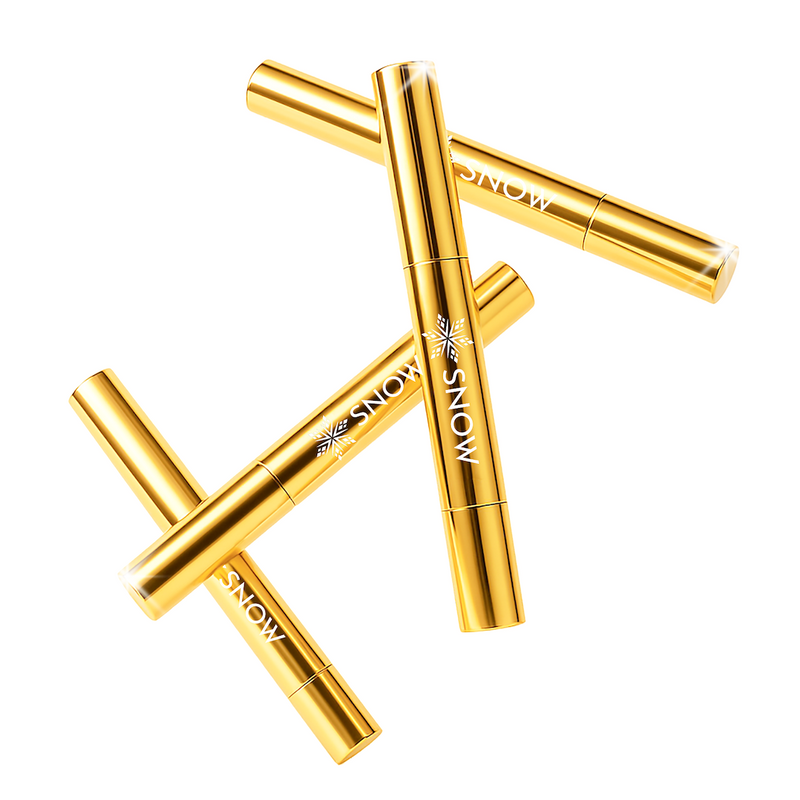

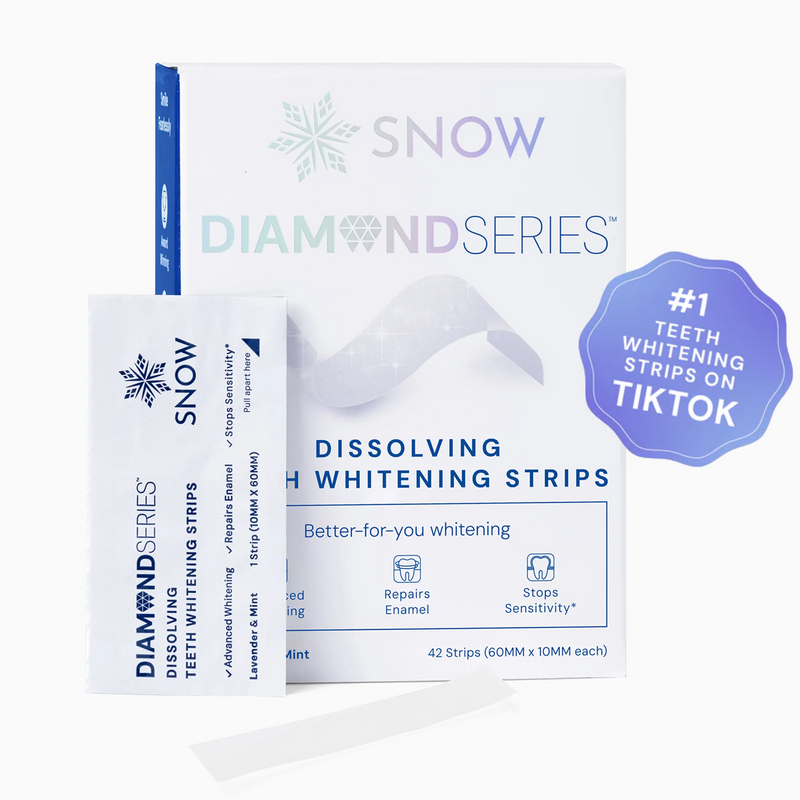
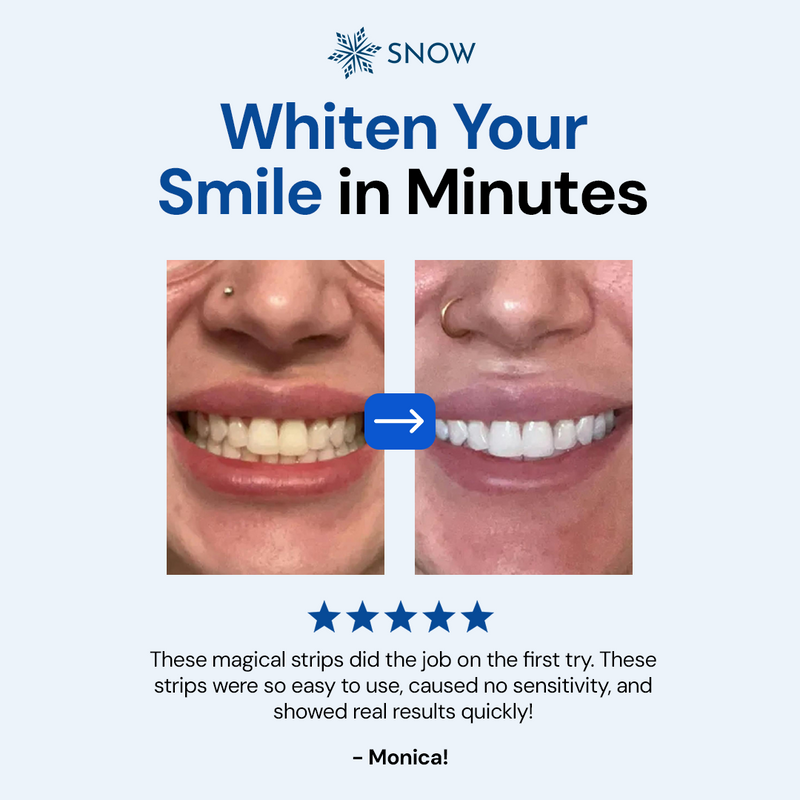
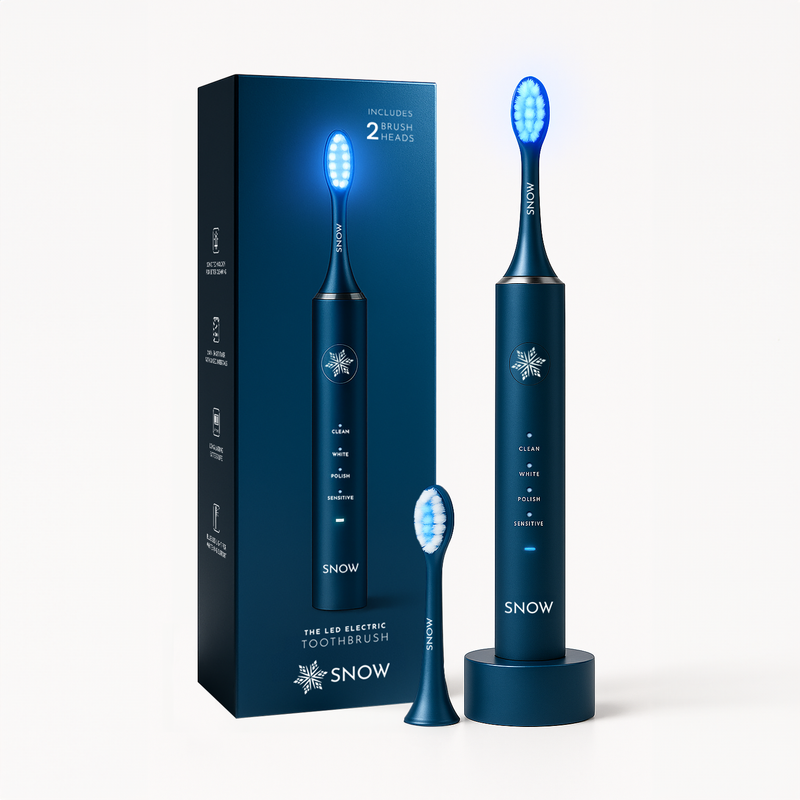

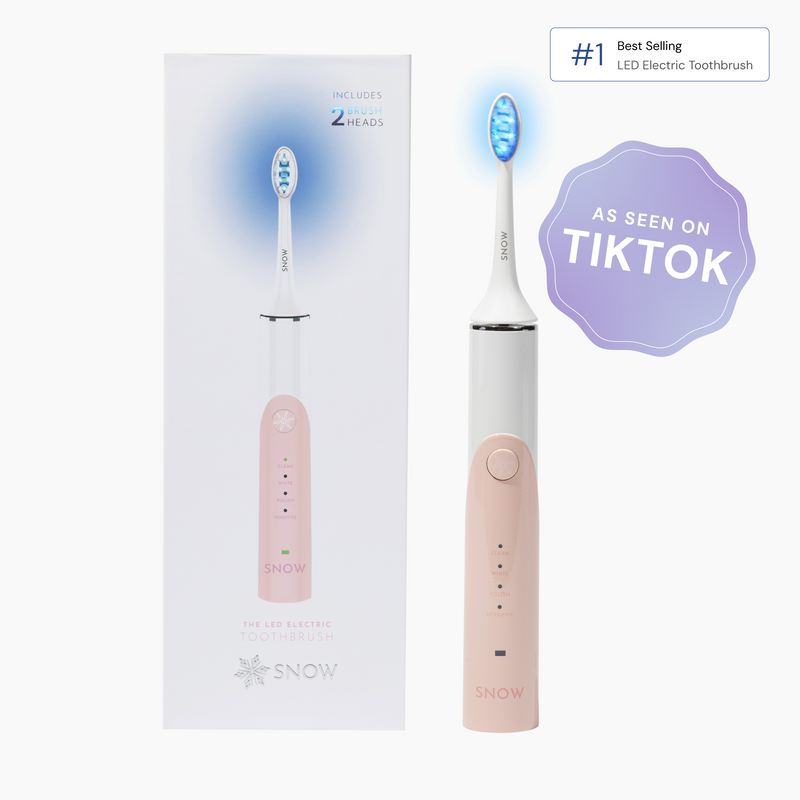




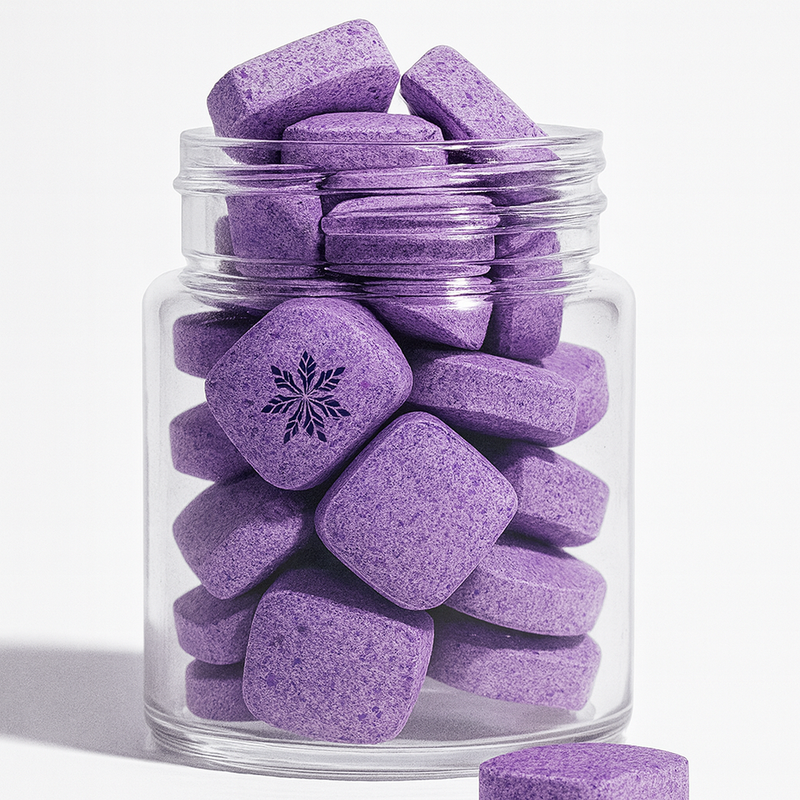
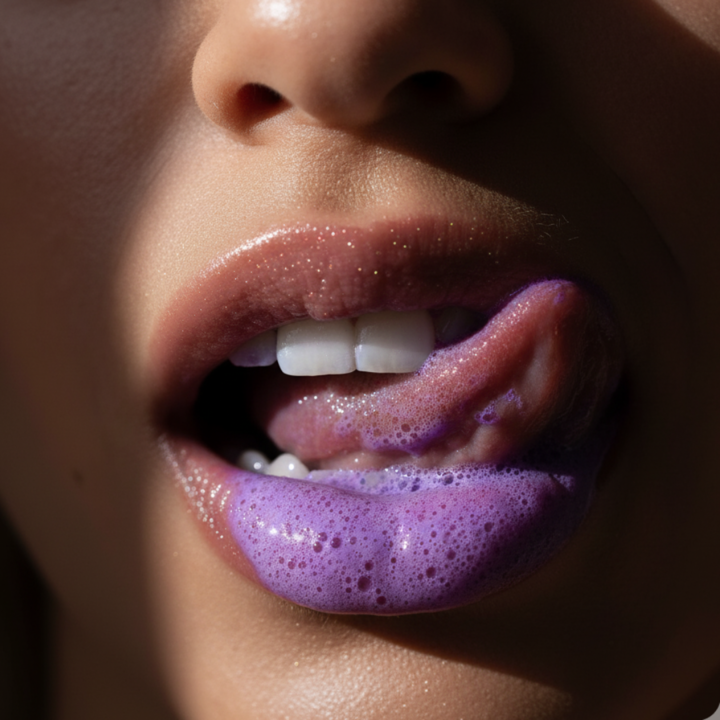






![Is It Safe to Use Whitening Toothpaste Everyday? [The Real Answer]](http://snow-teeth-whitening.myshopify.com/cdn/shop/articles/is_it_safe_to_use_whitening_toothpaste_everyday.png?v=1759931228)


